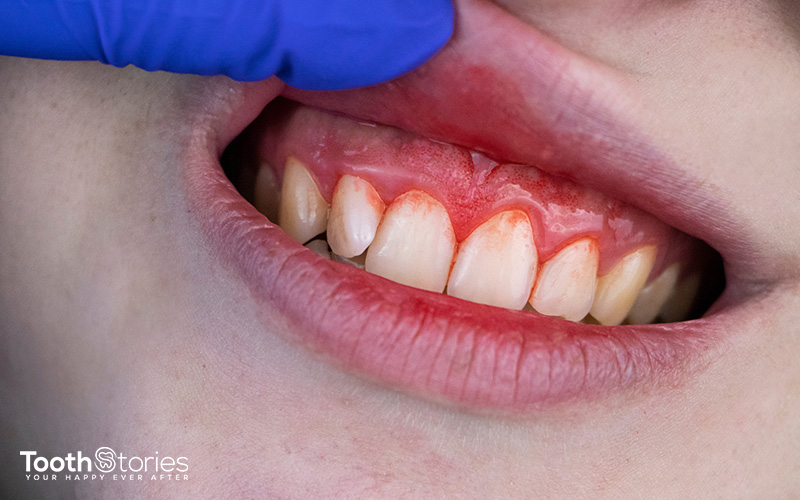
Understanding the Stages of Gum Disease
Your smile is a reflection of your overall health, and maintaining healthy gums is a crucial aspect of oral well-being. Regardless of age, gum disease, also known as periodontal disease, can affect anyone, underscoring the importance of understanding its development and taking proactive steps. In this guide, we’ll delve into the nuances of gum disease, exploring its stages and the importance of early detection and intervention.
Let’s get started.
1. Gingivitis: The Earliest Stage of Gum Disease
At the inception of gum disease lies gingivitis, a term that many have heard but may not fully understand. Gingivitis is the inflammation of the gums, triggered primarily by the accumulation of plaque—a sticky film of bacteria that forms on teeth. Poor oral hygiene habits contribute to the development of plaque with common signs that include red, swollen gums which may bleed easily during brushing or flossing.
Fortunately, the journey from gingivitis to a healthy smile is well within reach. With the magic trio of regular check-ups at a dental clinic in Singapore, diligent brushing, and mindful flossing, you can not only reverse gingivitis but also bid farewell to plaque, ensuring it doesn’t make an unwelcome comeback.
2. Early Periodontitis
If left untreated, gingivitis can advance to early periodontitis, a phase characterised by the formation of pockets between the teeth and gums. These pockets create an ideal environment for bacteria to thrive, further aggravating the condition. As the infection progresses, the body’s natural response— inflammation—intensifies, causing damage to the surrounding tissues and bone that support the teeth.
Symptoms of early periodontitis may make its presence known through persistent bad breath, receding gums, and heightened tooth sensitivity. The importance of regular dental services becomes even more pronounced at this level, as professional cleaning and treatment are essential to stop the progression of the disease.
Moderate Periodontitis
As gum disease advances, it enters the moderate periodontitis stage. By this point, the damage is more extensive, with increased pocket depth and a greater risk of tooth loss. The body’s immune response continues to attack the supporting structures of the teeth, leading to further deterioration of the gums, bones, and ligaments.
Patients with moderate periodontitis may experience more noticeable symptoms, including loose teeth, changes in bite alignment, and increased difficulty in chewing. Treatment at a dental clinic during this phase may involve more intensive interventions, such as scaling and root planing, to remove hardened plaque (tartar) and smooth the tooth roots.
Advanced Periodontitis
The most severe progression of gum disease, advanced periodontitis, poses a significant threat to both your oral health and overall well-being. At this point, the damage to the supporting structures is extensive, leading to widespread tooth mobility and potential tooth loss. The risk of infection and complications extends beyond the oral cavity, affecting systemic health.
Advanced periodontitis manifests in symptoms like severe gum recession, pus between teeth and gums, and noticeable changes in the appearance of the affected teeth. Your dentist would suggest surgical dental services, such as gum grafts or tooth extraction, to mitigate the damage and prevent further spread of the infection.
Gum disease, if detected early, is reversible with proper oral care and professional intervention. However, neglecting the signs and symptoms can lead to different levels of periodontitis, each demanding more comprehensive and intensive treatment. Schedule your comprehensive dental check-up at Tooth Stories today, and let our experienced team craft a personalised plan to safeguard your smile.
Whether you’re looking for preventive care, addressing existing concerns, or seeking expert advice on maintaining a healthy smile, our dental clinic is here for you.
